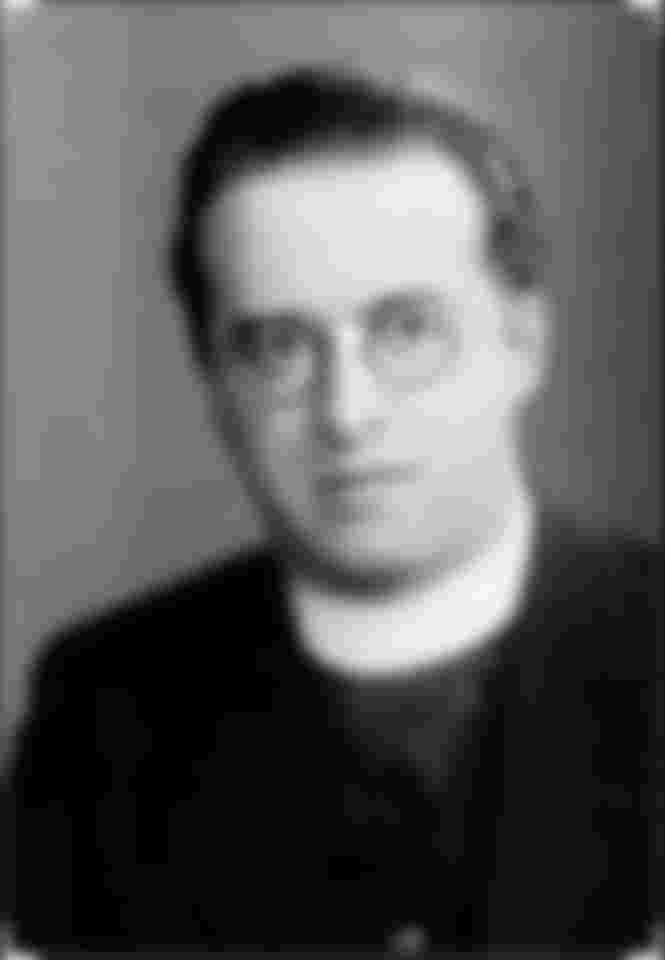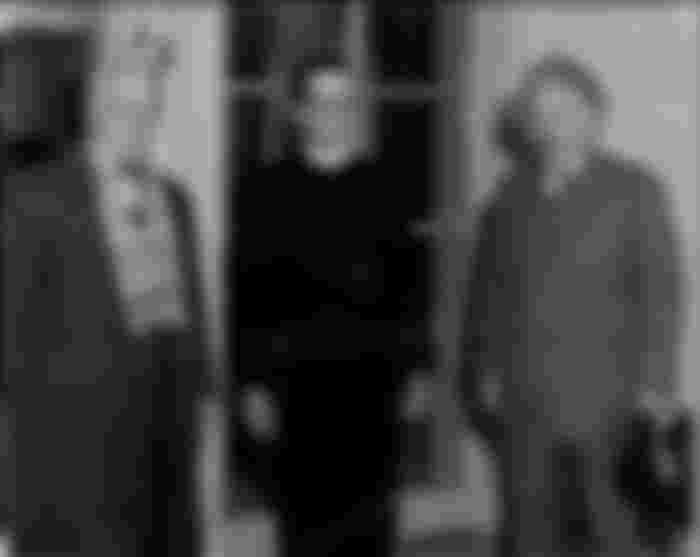
George Lemitri: The proponent of the Big Bang theory
_______________________________
About 13.85 billion years ago today, the universe was created from a very dense and heated state. Then gradually all matter, particles and antiparticles were created. Over time, different planets, stars and galaxies have been created. This theory is called the Big Bang Theory or the Big Bang Theory.
In a word, we have created this universe from a point (exploded). The Big Bang theory behind the creation of the universe is the most acceptable. The proponent of this Big Bang theory is George Lemitri. He first proposed this theory in 1926.
Many believe that Stephen Hawking is a proponent of the Big Bang theory. This is a misconception. Stephen Hawking later worked on the Big Bang theory. But George Lemitri gave the first idea. Today's topic is George Limitri.
George Henry Joseph Edward Lemitri was born on July 16, 1894, in Charleroi, Belgium. Lemitri's father, Joseph Lemitri, and mother, Maguireit Lanoy.
Lemitri entered the Catholic University of Louvain in 1911 for an engineering degree. He was then 18 years old. World War I started in 1914 while I was graduating. During the war he first volunteered with the Belgian army. Lemitri later served as an officer there.
He fought like a hero in battle. He was awarded the War Cross by the Belgian government. But the killings on the battlefield left Lemitri deeply unsettled. This war changed his life.
After the war he returned to the university. He started studying again. This time, however, the inclination towards mathematics has increased more than before.
In 1920, he submitted a thesis paper entitled 'Approximation des Phonations de Placios Variable Rails'. In the same year, he obtained a Doctor of Science degree in Mathematics.
Another change in his life came with the experience of war. In 1923 he was admitted to a missionary called Mycenae St. Rombat. As a result, his name also changes. George Lemitri is replaced by Abbey Lemitri.
Lemtri has always been a good student in mathematics. This time he leaned towards mathematical astronomy. Malin left the city and moved to Cambridge in the 1923-24 academic year. Here he found Arthur Eddington as a teacher. He graduated from Cambridge and came to Harvard College.
Lemitri joined the Louvain Catholic University in 1925 as a part-time lecturer. He once took an engineering degree from this college. Although he was a lecturer, he spent most of his time at Harvard and the Massachusetts Institute of Technology in the United States.
Two years later he submitted a thesis to MIT entitled ‘The Gravitational Field is a Fluid’. He received his doctorate in 1928. Lemitri was supervised by Harlow Shapley (who determined the position of the Sun in the galaxy).
Lemitri did partial research at Harvard, MIT and Louvain. In the same year, Universal Homogene de Masse Constant et de Rayon croissant rendant compte de la vitesse radial des des nebulauses extra-galactiques was published. This research paper later brought Lemitri to international fame. In this paper, he describes, the universe is expanding. In 1926, such thoughts of his became black.
The famous Salvage Conference was held in 1926, attended by most of the leading physicists. Einstein himself was present at that conference. Einstein said that the kind of solution that Lemmetri mentioned in his book was made by Friedman in 1922. Einstein added, however, that although I thought that Lemitri's formulas for general relativity were mathematically correct, they were practically impossible. Lemetri's calculations are correct, but disgusting for physics.
It's not just Einstein who found Lemitri's idea unacceptable. Almost all the scientists of that time said the same thing. Lemitry's solution does not apply to physics. Where Einstein himself does not find Lemitri's solution acceptable, what more can Lemitri have hope for! One of the reasons for this, scientists still thought, was that the universe was stable. Einstein could not accept Lemitri's idea of an expanding universe.
Two years later, Hubble's idea of a vast universe became a beacon of hope. Scientists played a big push. Arthur Eddington, a one-time teacher at Lemitri, was then president of the Royal Society. Eddington and other members of the Royal Society then rushed to resolve it. Nothing happened. Lemitri then sent a copy of 1926 to Eddington. Eddington's eyes watered as he read the paper. This paper is the solution to the problem. He immediately translated it into English and published it in March 1929.
No one wanted to accept one aspect of Lemitri's theory. The universe began at a certain time, Lemitri said. But other scientists believed that the universe had no beginning and no end. The universe has always been. This was the first clear idea of the Big Bang theory. However, the name Big Bang is not given by Lemitri.
Gradually almost all scientists believed in the Big Bang theory, but Fred Whale did not. In a radio broadcast in 1950, he ridiculed Lemitri's theory as the "Big Bang." Hence the name of this theory is 'Big Bang' theory.
Although Einstein initially rejected Lemitri's theory, he quickly and publicly supported Lemitri's theory after Hubble's discovery was published. Both the theory and its proponents helped to gain quick recognition. Lemitri was a pioneer in applying Albert Einstein's theory of general relativity to cosmology.
Einstein and Lemitri gave multiple lectures in California.

In a 1933 speech, after discussing Lemitri's "Big Bang" theory, Einstein said, "This is the most beautiful and satisfying explanation I have ever heard."
In 1933, Lemitri resumed his research. His research paper was translated into English by MAH McCallum and published in 1997. Lemitri's research papers that year began to be published in various journals. Gradually people began to recognize him as one of the world's leading astronomers. The New York Times captioned a photo of Einstein and Lemitri together - with deep respect and admiration for each other.
Lemitri was at the same time a leading scientist and a Catholic priest. Because of this he had to read the problem. In 1951, Pope Pius Lemitri's research was declared "anti-religious." Lemitri opposes him, saying the theory is neutral. There is no connection or conflict between religion and this theory.
The pope's scientific adviser, Daniel O'Connell, persuaded Lemitri to stop declaring the universe.
Lemitri was a devout Catholic. But opposed mixing religion with science. He was the center of attraction of the TV channels of that time. According to Lemitri, there is no conflict between religion and science.
Lemitri has been awarded various prizes. Notable among these is the Fran৪ois Prize of 1934. This award is the highest scientific honor in Belgium. King Leopold III presented the prize to Lemitri.
In 1936 he joined the Pontifical Academy of Sciences as a member. It was here that he served as president from 1970-71. In 1941 he was elected a member of the Royal Academy of Sciences and Arts of Belgium. In 1946, his book The Private Atom Hypothesis was published. The book was published in Spanish that year and in English in 1950.
In 1951, George Lemitri was awarded the first Eddington Medal by the Royal Astronomical Society. He was nominated for the Nobel Prize in 1954 as the first theoretical physicist. He was also nominated for the Nobel Prize in Chemistry for basic atomic theory. But unfortunately, he never won the Nobel.
As mentioned earlier, Lemitri joined the Louvain Catholic University in 1925 as a part-time lecturer. Two years later, in 1926, he joined there as a professor. He worked at this university for the rest of his career.
Lemitri has spent his entire career in Europe. Therefore, his scientific work was not as well known in the United States as Hubble or Einstein. Nevertheless, Lemitri's theory changed the course of the universe.
Jorge Lemitri breathed his last on June 20, 1987 in his hometown of Belgium.
Source: MathHistory.st


Nice article, subscribe done back please https://read.cash/@Sadia17/crypto-currency-eea41adc